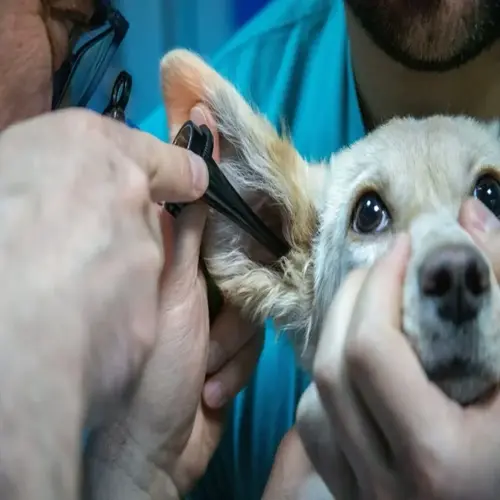What are signs of overstimulation in dogs?

Written by
Kailani Okoro
Reviewed by
Prof. David Walsh, Ph.D.Signs of overstimulation in canines should be recognized immediately before things escalate into stress. These signs indicate an overload of mental function, which means action needs to be taken. If the signs of overstimulation are ignored, behavior problems and aggression could result. Recognizing the signs of this important nature will enable you to better care for your dog.
Physical Stress Signals
- Excessive panting without heat or exercise
- Whale eye showing white around pupils
- Trembling unrelated to temperature changes
Behavioral Changes
- Refusal to engage with favorite toys
- Compulsive circling or tail-chasing patterns
- Hiding under furniture unexpectedly
Social Withdrawal
- Avoiding previously enjoyed spaces
- Uncharacteristic growling during interactions
- Flattened ears when approached
Most incidents of overstimulation often stem from the same trigger. For example, thunderstorms or fireworks produce the same sound levels. Overpopulated environments stimulate sensory overload for these sensitive dogs. The sudden input of unexpected contact while sleeping creates startling anxiety. Having multiple dogs in the house can lead to numerous territorial disputes.
Prevention approaches limit the chances of overstimulation. Watch the length of play sessions closely. Provide safe relocation, such as crates, to protect the dog. Learn the dog's tolerance levels. Schedule quiet time in between activities. All of these ideas will help preserve the dog's mental balance.
Breed vulnerabilities affect stress responses. Herding breeds become hyper-vigilant. Toy breeds startle easily. Rescue dogs often have lower thresholds. Understand your dog's specific sensitivities. Adjust environments accordingly.
Recovery Strategies to Help Reset a Dog: Use calming scents, such as lavender, on bedding. Provide frozen treats for licking to help relax. Offer a slow massage behind the ears as a helpful activity. Keep the surroundings quiet until the dogs return to normal behavior.
Read the full article: 10 Essential Dog Mental Stimulation Activities

